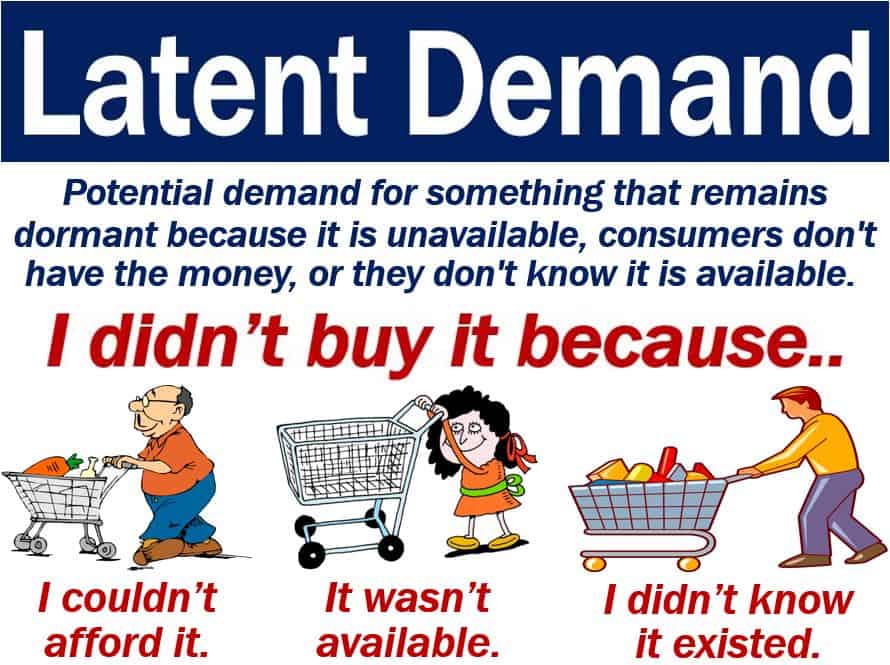Latent demand refers to demand for a good or service that consumers cannot satisfy for three main reasons. First, the consumer does not have enough money to buy the item. Second, the item is not available. Third, the consumer does not know that the product or service is available.
If a consumer cannot satisfy a desire for something because they cannot point it out, we could say there is latent demand. If the consumer does not realize what is missing until somebody points it out, there is also latent demand.
Put simply; when there is latent demand, the current business environment or marketplace cannot satisfy that demand.
It is the opposite of effective demand. Effective demand is the quantity that consumers can and are willing to purchase at each conceivable price.
In economics, demand refers to the measure of desire to purchase and own a good or service. When the price of something goes up, demand for it declines. Put simply; demand is how much people are willing and able to buy something.

Latent demand – identifying the gaps
To discover latent demand, the marketer needs to identify gaps in the market.
However, to do this effectively, it is necessary for the end consumer to participate. The end consumer may participate in focus group discussions. In-depth interviews with consumers may also be an effective way to access the gaps successfully.
A major objective in marketing is to influence potential buyers to use available money in favor of a specific product. Another objective is to boost purchasing power through purchase contracts or deferred billing.
There are many terms in business, marketing, and economics which have the word ‘latent.’ A latent market, for example, is a market in which there is demand for something. However, that item is not available, i.e., there is no supplier. If a company created that item and started to sell it, people would buy it.
